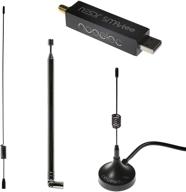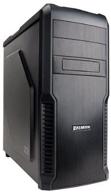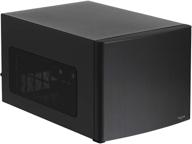
Review on Nooelec SAWbird H1 Applications Frequency by Pogo Shakey

Great work in tandem with Astrospectrometer
Amazing and powerful technical capabilities are now available to radio amateurs. My original plan was to reproduce some of the results documented by a group of students on the internet. Their project demonstrated how the natural frequency H1 (1420.4 MHz) of neutral hydrogen can turn red and blue due to the Doppler effect and the rotation of our Milky Way (MWG). Similarly, West Virginia University Radio Astronomy Project (WVU RAIL) spectrometer software using a polyphase filter bank technique was used to improve the detection of weak astronomical signals from clutter. Instead of a horn antenna, a simple Wi-Fi mesh antenna was used in combination with a dipole feed element, tuned to 1420 MHz using return loss testing. Sawbird+H1 served as the upstream LNA due to its lower published noise figure, and the spectrum analyzer confirmed a relatively flat bandwidth of 30 dB. Downstream devices included Raspberry Pi-4 running spectrometer software and NESDR Smartee sampling rate of 2.4 MSPS. In the attached image, the dish is pointing near the star Alya near the galactic plane at about +35 degrees longitude and 0 degrees. Broad. There is a noticeable peak around 1420.56MHz, followed by a dip and then another small peak at 1420.59MHz. These blue-shifted frequencies appear to be related to H1 concentrations in regions of the MWG spiral arms moving toward the observer. Frequency deviations from the H1 baseline correspond to tangential (straight-line) velocities of 33.8 km/s and 40.1 km/s, respectively. By considering the speed of the sun relative to the galactic core, it is possible to estimate the rotation speed of the galaxy. Calibrating a spectrometer using its "hot" and "cold" reference temperatures is critical before observing.
- Electronics
- Safety
New products
Comments (0)
Top products in 📺 External TV Tuners

USB Extender 165ft 50m 4-Port USB2.0 HUB for Cat5e Cat6 - Webcam Work Sync, Plug & Play for Camera Storage Hard Drive PC Windows, macOS, Android, 1.5m USB Cable, 5V Power - USB Over Ethernet EX60USB

8 Review

📻 Enhanced NESDR SMArTee v2 Bundle - Top-Notch RTL-SDR with Built-in Bias Tee, Sturdy Aluminum Enclosure, 0.5PPM TCXO, SMA Input Port, Antenna Base & Trio of Antennas. RTL2832U & R820T2-Based Software Defined Radio (SDR)

10 Review

📻 NooElec High Gain ADS-B Radio and Antenna Bundle - Dual-Band NESDR Nano 2 (978MHz & 1090MHz), Starter Edition for Stratux, Avare, Foreflight, and FlightAware

8 Review

🔍 NooElec NESDR Smart XTR Bundle - Premium RTL-SDR with Extended Tuning Range, Durable Aluminum Enclosure, Ultra-Precise 0.5PPM TCXO, SMA Input

9 Review
Another interesting products

Computer case Deepcool Matrexx 55 black

55 Review

Zalman Z3 M ATX 💻 Tower Computer: A Compact and Powerful Machine

77 Review

Fractal Design Node 304 - Black - Mini Cube Compact Computer Case - Small Form Factor - Mini ITX – mITX - Enhanced Airflow - Modular Interior - Includes 3x Fractal Design Silent R2 120mm Fans - USB 3.0

42 Review

Fractal Design Define R5 - ATX Mid Tower Computer Case - High Airflow and Silent Optimized - Includes 2x Dynamix GP-14 140mm Silent Fans - Water-Cooling Ready - Black

43 Review

